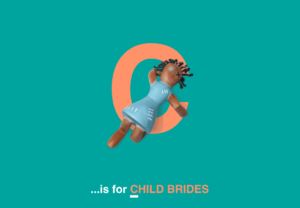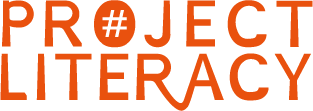Illiteracy from A to Z
Published on January 4, 2017, at 3:13 p.m.
by Nicole Morgan.
758 million. That is the number of people around the world who cannot read this sentence.
Imagine not being able to vote in an election or fill out a form at the hospital because you can’t read. This is a reality for one in 10 people in the world today.
Project Literacy is a global campaign that aims to change this reality. Assembled by Pearson, a FTSE 100 learning company, the campaign is designed to make great strides in the fight against illiteracy “so that all people — regardless of geography, language, race, class, or gender — have the opportunity to fulfill their potential through the power of words,” according to its website. This global movement has brought together a community of more than 80 diverse partners to help ensure that by 2030, no child will be born at risk of insufficient literacy.
“The goal of this campaign is to encourage people to learn about this issue because it’s an issue that is kind of forgotten. Food, shelter, clothing and housing — those things are of the utmost importance, especially in refugee crisis situations, but the piece that we found was missing was this education component,” said Jennifer Rosenthal, parent outreach community manager for Global Corporate Affairs and Marketing at Pearson.
This past February, London-based creative agency FCB Inferno launched a campaign for Project Literacy titled the “Alphabet of Illiteracy.” With help on the public relations front from Interpublic’s (IPG) sister agency, Weber Shandwick, the campaign has since received much praise for giving life to the risks and repercussions of illiteracy by creating a connection between illiteracy and major global problems with the use of the alphabet.
The creative idea
The announcement of Pearson designating FCB Inferno to create a campaign to raise awareness for its flagship social strategy, Project Literacy, was posted on Sept. 30, 2015, on FCB Inferno’s website. That same day, the London-based creative agency began the initiative of engaging its audience by launching the world’s largest unsigned petition to bring attention to the severity of illiteracy. The petition contains 757 million blank spaces, which represent the number of people worldwide who are illiterate. The petition encourages those who can read and write to sign their names on the petition and to also sign for those who cannot.
The team for the campaign spanned from London to Barcelona, with help from sculptor Wilfrid Wood, animators, lyricists and a company of web designers. The idea behind “The Alphabet of Illiteracy” campaign was to create something that conjured conflicting emotions by connecting “the building blocks of reading and writing” — the ABC’s — with the bleak reality of illiteracy.
Each letter of the alphabet is paired with a major global issue that stems from illiteracy, such as poverty and radicalization, along with a Project Literacy partner. For example, “L” stands for Life Expectancy, because people who can read and write live longer. World Literacy Foundation is partnered with this letter in an effort to help eliminate illiteracy in the world.
“Project Literacy is kind of a convener. The whole concept is there are tons of amazing charities, NGOs and organizations doing incredible work globally, here in the U.S. and across the world,” said Rosenthal. “And Pearson, as kind of the world’s education company, the largest learning company, we thought we could be the convener in bringing these organizations together to work together, to learn from one another, and also to leverage our position to raise awareness of the importance of this issue.”
The implementation
“The Alphabet of Illiteracy” is presented in a 90-second film to the tune of the 1948 hit, “’A’ You’re Adorable.” By tying the popular childhood melody with the grim reality of illiteracy, the agency aimed to capture the emotions of viewers and turn that into action. The film is targeted toward a millennial audience, with a focus on those who are interested in social issues and are highly active and influential on social media.

According to FCB Inferno’s website, “‘A’ stands for AIDS, because if you can’t read or write you are five times less likely to understand how people can contract HIV. ‘B’ is for Bloodshed, because the rate of violent crimes, such as homicide and sexual assaults, is almost double among the illiterate population. ‘C’ is for Child Brides, because if all women had the literacy skills required to complete primary education, child marriages would reduce by a sixth.”
In order to reach its key publics, Weber Shandwick created a social media initiative across Facebook, Instagram, Twitter, YouTube and Tumblr that accompanies the campaign and tells the story of every letter. Each social media platform goes into greater detail about each letter with facts and discusses the work done by the campaign’s partners. Along with this strategy, outreach from the campaign encourages key social influencers — especially those close to literacy and sustainable development and high-profile partners — to add their voices to the cause.
“The health care landscape is constantly evolving and changing,” said Blair Martin, an assistant account executive in the Healthcare practice at Weber Shandwick. “It is necessary for public relations professionals to recognize gaps within the industry that need to be filled. In this case, it was shedding light on illiteracy and its risks and consequences and urging consumers and policymakers to take action.”
The full “Alphabet of Illiteracy” is featured on ProjectLiteracy.com, where visitors can explore the story behind each letter and see how Project Literacy’s partners are tackling each issue. Visitors are encouraged to take action by sharing the film, volunteering or signing the petition to ask the U.N. to place a high importance on literacy for every action to advance the Global Goals for Sustainable Development.
“Public relations within the health care landscape is crucial,” Martin said. “There is always a conversation to be had and a need to be met. As PR professionals, it is our job to identify those needs and work to meet them.”
The results
Since the launch, the campaign has produced astounding results with more than 12.8 million views of the film and up to 17,000 followers on Twitter with more than 27.3 million social impressions, according to FCB Inferno’s website. The petition has amassed over 755 million signatures, and Project Literacy has been invited to be a part of the UNESCO Global Alliance for Literacy, the panel advising on global illiteracy. FCB Inferno, on behalf of Project Literacy, was awarded the Cannes Lions Health & Wellness Grand Prix this past year.
In a press release posted on Project Literacy’s website, FCB Inferno CCO Owen Lee said, “This is a great example of craft and insight coming together to make a real impact. By clashing the innocence of the ABC with some of worst problems facing humanity the campaign proved to be very powerful. These awards are a great honour and we thank Pearson for being such a bold partner.”
Laura Schoen, president of Global Healthcare at Weber Shandwick, said in a press release posted on the agency’s website, “Creativity is essential in healthcare. As health communicators, we’re tasked with breaking down complex issues and engaging people with information that leads to better understanding. This recognition from the Lions Health organization is indicative of the commitment our client partners have made to continue to raise the bar, break through barriers and make an impact in health and in people’s lives.”
What started as letters from the alphabet to the tune of the 1948 hit, “’A’ You’re Adorable,” has now become a global movement advocating for literacy for all. By combining PR with ingenuity, FCB Inferno and Weber Shandwick created a successful campaign that has brought to life the importance of literacy.





